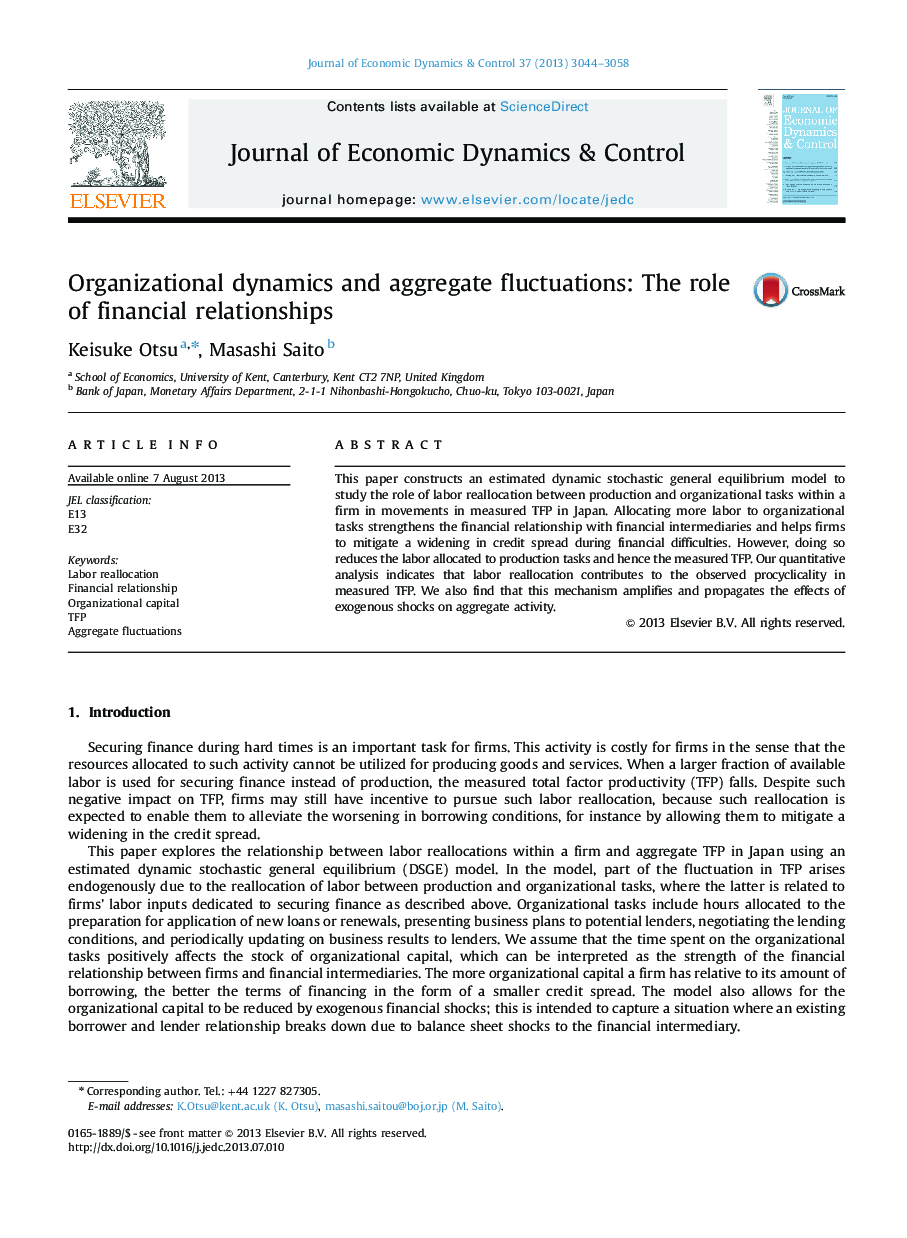| Article ID | Journal | Published Year | Pages | File Type |
|---|---|---|---|---|
| 5098687 | Journal of Economic Dynamics and Control | 2013 | 15 Pages |
Abstract
This paper constructs an estimated dynamic stochastic general equilibrium model to study the role of labor reallocation between production and organizational tasks within a firm in movements in measured TFP in Japan. Allocating more labor to organizational tasks strengthens the financial relationship with financial intermediaries and helps firms to mitigate a widening in credit spread during financial difficulties. However, doing so reduces the labor allocated to production tasks and hence the measured TFP. Our quantitative analysis indicates that labor reallocation contributes to the observed procyclicality in measured TFP. We also find that this mechanism amplifies and propagates the effects of exogenous shocks on aggregate activity.
Related Topics
Physical Sciences and Engineering
Mathematics
Control and Optimization
Authors
Keisuke Otsu, Masashi Saito,
